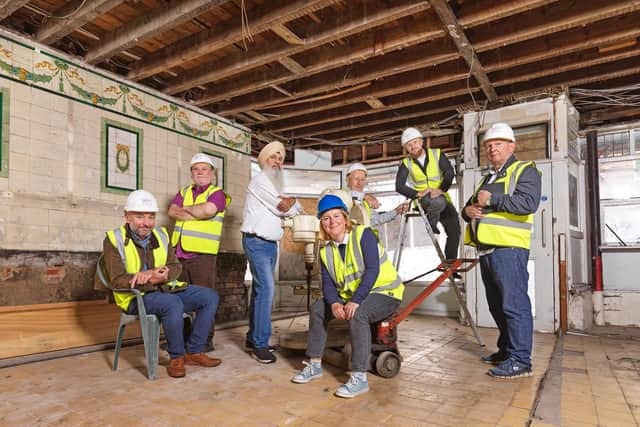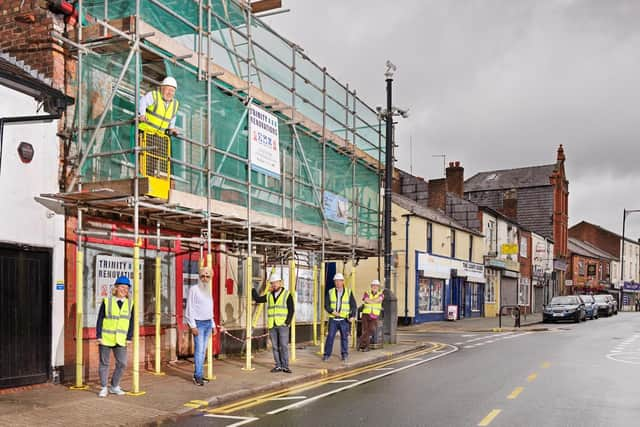Project to regenerate Wigan borough high street and protect its history is progressing
and live on Freeview channel 276
For Tyldesley Community Interest Company (CIC) was set up in 2019 to deliver improvements to the town centre conservation area, along with Historic England and Wigan Council.
It secured £1.5m from Historic England for a three-year scheme to invest in buildings and community and cultural events.
Advertisement
Hide AdAdvertisement
Hide AdWork in the high street heritage action zone has been focusing on Elliott Street, which is the main route through Tyldesley and is believed to follow a Roman road.


The project is repairing buildings, restoring historic features and encouraging economic regeneration to foster a renewed sense of pride for Tyldesley’s historic town centre.
For Tyldesley CIC, led by resident Ian Tomlinson, has started repairing and restoring landmarks such as Frank’s café, Cellar 5 and Pen to Paper, as well as the Marklands building.
They have produced a shop-front design guide to inspire the continued sensitive development of the conservation area.
Advertisement
Hide AdAdvertisement
Hide AdMr Tomlinson’s team is also delivering heritage skills activities, building maintenance workshops and a digital heritage trail, as well as a heritage schools project to capture children’s vision for their town centre.


These activities seek to secure the legacy of the improved Tyldesley town centre conservation area beyond the lifetime of the high street heritage action zone.
Historic England highlighted the progress being made in Tyldesley as it published its annual Heritage at Risk Register for 2021.
The register is the yearly health check of England’s most valued historic places and those most at risk of being lost forever as a result of neglect, decay or inappropriate development.
Advertisement
Hide AdAdvertisement
Hide AdIt reveals that in the North West 77 Grade I and II* listed buildings and structural scheduled monuments, 136 places of worship, 82 archaeology entries, eight parks and gardens, and 69 conservation areas are at risk.
Across the country 233 entries have been removed from the register, while 130 entries have been added because of concerns about their condition.
Over the past year, Historic England has spent £14.5m in grants on helping some of the country’s best loved and most important historic sites on the register.
Catherine Dewar, Historic England’s North West regional director, said: “Our heritage is an anchor for us all in testing times. Despite the challenges we have faced recently, this year’s Heritage at Risk Register demonstrates that looking after and investing in our historic places can contribute to the country’s economic recovery, bring communities together and help tackle climate change by avoiding carbon emissions from building new.
Advertisement
Hide AdAdvertisement
Hide Ad“The amazing progress made this year in the North West shows what’s possible with strong partnerships, dedicated individuals and funding support. But there is always more to do to give our cherished historic places the attention, investment and secure future they deserve.”
Thanks for reading. If you value what we do and are able to support us, a digital subscription is just £1 for your first month. Try us today by clicking here